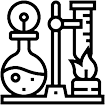Home / Products / Workwear / Medical Garments / Patient /Nursing Gown
-
-1.png?imageView2/2/format/jp2)
SMS Non-Woven Anti-Virus/ Waterproof/Breathable Level 1 Isolation Gown/Surgical Gown/Patient Gown/Nursing Gown TTK-C02 Series 100
Level 1 Isolation Gown
-

Lightweight Isolation/ Anti-Virus/Waterproof Level 1 Isolation Gown/Surgical Gown/Patient Gown/Nursing Gown TTK-C03 Series 100
Level 1 Isolation Gown
Wujiang TTK®
Textile&Finishing
Co., Ltd.
Wujiang TTK@ Textile&Finishing Co., Ltd is professional China Patient /Nursing Gown Manufacturers and Patient /Nursing Gown factory, passing ISO9001:200 quality management system certified by SGS. The company has greige fabric weaving factory, coating factory, lamination and bonding factory, transfer coating and tractor roller coating high-end membrane factory and printing factory subordinated to it.The company also has its own Trade Dept.
-
Our professional Custom Patient /Nursing Gown, The company has greige fabric weaving factory, coating factory, lamination and bonding factory, transfer coating and tractor roller coating high-end membrane factory and printing factory subordinated to it.The company also has its own Trade Dept., Sample Dept., Research and Development Dept. and Test Center which forming one stop service for textile products.
TTK is a research & development enterprise that has been engaged in functional anti-microbial fabric for 2 decades. It was initial devoted to research and development of high-tech military fabrics, medical antibacterial materials and civil functional fabrics. -
In 2003, the company served as al supplier of raw fabrics and finished goods for suits used in fighting SARS, and ever since it has viewed medical high-tech materials as one of its. directions for research & development. In view of the prevailing COVID-19, the enterprise has developed as soon as possible the later materia non-woven fabric + PE highly breathable antibacterial membrane composite product) suitable for disposal medical protective suit production line and organized production of novel disposable medical protective suit made of TTK-PE disposal overall gown. The novel product can guarantee antibacterial performance and breathability of the protective suit and high strength of non-woven fabric + PE highly breathable antibacterial membrane composite fabric.
-
Explore more
We are a textile manufacturing enterprise mainly engaged in textile finished products sales and finishging manufacturing, with self - run import and export right, passing ISO9001:200 quality management system certified by SGS.








-

Standardized Workshop
ISO9001 2008 The industry's standardized and large-capacity machinery accessory manufacturers, the quality of customers is guaranteed, and the delivery time of customers is guaranteed.
-

Sophisticated Equipment
International sophisticated processing equipment, superior design capabilities, and exquisite manufacturing technology, escorting customers' quality assurance at any time.
-

Lab Experience
The company has an advanced laboratory to provide on-site experience for customers who have doubts, allowing you to make a choice without regrets.
-

Strong Service Team
In order to facilitate the pre-sale, sale and after-sales service of customers across the country, the company has set up a professional team, no matter where you are, we are by your side!
-
 Industry News
Industry NewsHow can light and thin waterproof surgical gowns achieve a double breakthrough in breathability and protection?
In medical surgery scenarios, the protective performance and wearing comfort of surgical gowns are always a contradiction. Although traditional waterp
-
-1.png?imageView2/2/format/jp2) Industry News
Industry NewsHow does SMS nonwoven ensure the protective effect of isolation gowns after disinfection?
In medical protection scenarios, SMS nonwoven anti-virus first-level isolation gowns build a safety barrier for medical staff with their performance.
-
 Industry News
Industry NewsHow do non-woven fabrics and seamless tapes build a strong anti-virus defense line for visitor coats?
In medical environments, the risk of virus transmission always exists. As an important protective equipment, the anti-virus performance of medical dis
-
 Industry News
Industry NewsHow is the lightweight isolation anti-virus waterproof first-level isolation gown waterproof?
In medical care and epidemic prevention work, the importance of lightweight isolation anti-virus waterproof first-level isolation gown nursing gown is
-
 Industry News
Industry NewsHow does waterproof SMS nonwoven fabric effectively protect against virus invasion?
In the field of medical protection, waterproof SMS nonwoven anti-virus three-level isolation gowns have a vital mission, and their core anti-virus mec

 English
English 简体中文
简体中文

